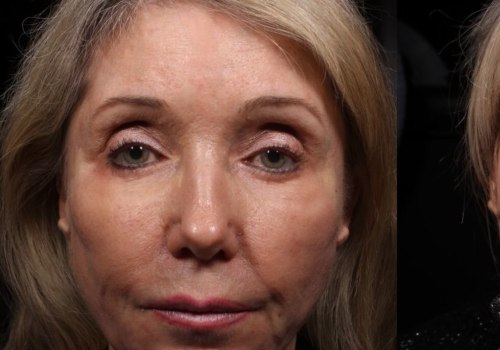Will the procedure be painful? Thread correction refers to low-traumatic methods and is considered a relatively painless procedure. However, even a small puncture requires anesthesia. However, as Cowell shows us, the procedure can be quite painful. Some studies suggest that most of the lifts people see in this type of procedure may come from swelling alone.
As such, it is not surprising that the results of this procedure tend to last less than 2 years. And the procedure carries a high risk of complications, including visible changes such as dimples or bumps in the skin. Although they may not be as serious as the complications of a surgical facelift, it certainly makes one wonder if the procedure is worthwhile.
thread lift
is a cosmetic procedure that offers a minimally invasive alternative to facelift surgery.Those who cannot have a surgical facelift due to medical conditions that make general anesthesia risky may consider a thread lift as a safer alternative. The costs of a thread lift will vary widely depending on where you live, the experience your provider has, and the number of areas you will be targeting with your treatment. The forehead, double chin, area under the eyes and eyebrows are parts of the face that can be considered for a thread lift. You can choose to target only one area or multiple areas at a time, which increases the cost.
A thread lift used to stretch and tighten the breasts may be more expensive.
thread lifts
do not require general anesthesia, so you save money on the cost of sedation. You also don't have to consider taking time off from work recovery. Recovery is minimal, it can even be done on the lunch break.Your plastic surgeon may recommend that you undergo additional therapies or cosmetic procedures, such as Botox or Juvederm, to increase the effects of the thread lift. Make sure you are aware of the costs associated with these procedures. A thread lift won't give you the same dramatic results as a surgical facelift. If you are considering investing in this procedure, it is important to have realistic expectations.
A thread lift is not permanent either. A facelift cannot stop the aging process completely, but the results last for many years. The subtle results of a thread lift usually last about 2 years. To make your results last longer, you may need dermal fillers or other therapies that cost extra time and money.
On the other hand, the risks of complications with facelift surgery are much higher. If you don't like the results of a facelift, there's not much you can do except undergo another invasive procedure. If you don't like the result of a thread lift, you can simply wait for the threads to dissolve. A thread lift is less expensive than a facelift.
You can go back to work after you've done it, and recovery is minimal. A thread made with PDO threads is usually no more painful than injectable treatments with dermal fillers. Before each procedure, I usually apply a combination of topical and injectable anesthetics to help reduce pain and maximize patient comfort. What was definitely most uncomfortable was the area around the incisions where the fat had been removed.
The incisions are very small, but they will leak fluid for a couple of days later, and since you've been subjected to a lot of unusual activity, it's no wonder your thighs hurt. My butt was a little bruised, but that was to be expected. After a couple of days, everything returned to normal. A typical treatment involves the placement of the desired number of threads, which may vary from a single thread per side, but may involve 50 threads or more to treat the face and neck.
A thread lift is a type of procedure in which temporary sutures are used to produce a subtle but visible stretch in the skin. The procedure involves placing needles into the skin, which are pre-filled with a pdo thread (polydioxanone). The threads used to reposition the skin will have the ends protruding after insertion and will be trimmed below the level of the skin once the desired lift has been achieved. Like other soluble dermal fillers, such as Botox, the threads used in the procedure will eventually be absorbed into the tissue beneath the skin.
In a thread lift procedure, temporary sutures are used to produce a subtle but visible stretch in the skin. Over time, the threads can migrate and the barbs can irritate the nerves, making them painful at a much later date. Dany Kayle, a renowned Dubai-based plastic surgeon who has performed thousands of successful procedures throughout his career and has been nicknamed “the king of thread lifting”. Using threads along the jawline is ideal if the skin starts to sag, as it really lifts and tightens the skin.
By combining this procedure with a thread lift, you can maximize the total amount of skin firming you receive and create a more even stretch by treating your neck and face. Thread lifters claim to tighten the skin by inserting medical-grade thread material into the face and then “pulling the skin up by tightening the thread”. You will also be advised to avoid saunas and high intensity workouts during the first week after performing the thread lift. First, local anesthesia will be used to numb the areas to be treated, then a small instrument (a thin cannula or needle) will be used to insert the threads under the skin.
Thread lifts use medical grade temporary suture material to “sew” the skin and tighten it. . .




